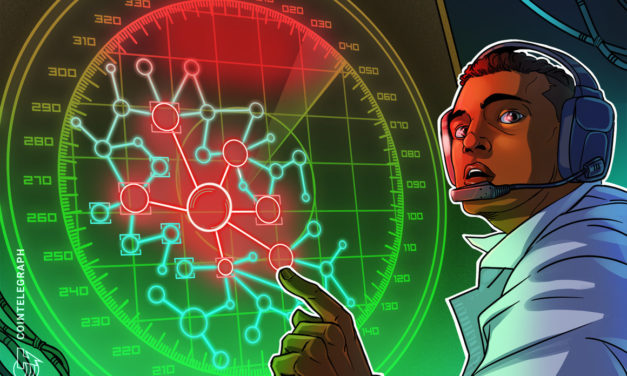FTX’s collapse could change crypto industry governance standards for good
The crypto market is often referred to as the Wild West of the finance world. However, the events that have unfolded within this space recently would put to shame even the hardiest of cowboys from the day of yore. As a quick refresher, on Nov. 8, FTX, the second-largest cryptocurrency exchange in the world till about a month ago, faced an unprecedented liquidity crunch after it came to light that the firm had been facilitating shady deals with its related firm Alameda Research.In this regard, as 2022 continues to be rough on the global economy, the crypto sector, in particular, has been ravaged by a series of meltdowns that have had a major impact on the financial outlook and investor confidence in relation to this maturing industry. To this point, since May, a growing number of prominent projects associated with this space— such as Celsius, Three Arrows Capital, Voyager, Vauld and Terra, among others — have collapsed within a matter of months.FTX’s downfall specifically has been extremely damaging for the industry, as evidenced by the fact that following the company’s dissolution, the price of most major crypto assets dipped majorly, having shown no signs of recovery thus far. For example, within just 72 hours of the development, the value of Bitcoin plummeted from $20,000 to approximately $16,000, with many experts suggesting that the flagship crypto may bottom out close to the $10,000–$12,000 range, a story that has been mirrored by several other assets.What lies ahead for cryptocurrency exchanges?One pertinent question that the recent turbulence has brought to the forefront is what the future now holds for digital asset exchanges, especially centralized exchanges (CEXs). To get a better overview of the matter, Cointelegraph reached out to Dennis Jarvis, CEO of Bitcoin exchange and cryptocurrency wallet developer Bitcoin.com. Recent: Bitcoin miners look to software to help balance the Texas gridIn his view, CEXs are being faced with a tremendous uphill battle right now, especially with revenues being low and stricter regulation waiting around the corner. In light of the current scenario, he pointed out that more and more people are and will continue to gravitate toward the use of self-custodial storage solutions, adding:“It’s obvious you can’t trust these centralized intermediaries. There will always be a place for CEXs, but over the long term, I believe they will play a minority role in the crypto ecosystem; certainly nothing like the outsized role they’ve enjoyed up to now.”Alex Andryunin, CEO of exchange market maker Gotbit, told Cointelegraph that there is already a major surge of institutional interest in decentralized exchange (DEX) trading. To this point, he highlighted that just a couple of months ago (i.e., September), his clients’ DEX-centric profits lay at $8 million but jumped to $11.8 million in subsequent months, signaling a 50% rise despite the bloodbath across the entire crypto industry. He added:“In my opinion, Binance, Coinbase, Kucoin and Kraken’s business models will survive the ongoing turbulence. However, even large entities like Coinbase are not currently competing with Binance. The company has no big competitors left. Even inside the U.S. market, Binance US is growing, while Coinbase, Gemini and Crypto.com are falling in DAU, as of Q3 2022.”Gracy Chen, managing director for cryptocurrency exchange Bitget, believes that we will now see trading ecosystems enter a consolidation phase, with these platforms being scrutinized more than ever before. In her view, this will create an opportunity for exchanges with strong balance sheets and solid risk management practices to cement their market share. “Ultimately, we believe there would be no more than 10 centralized exchanges with strong competitiveness in the industry,” she told Cointelegraph.Robert Quartly-Janeiro, chief strategy officer for cryptocurrency exchange Bitrue, shares a similar outlook. He told Cointelegraph that the collapse of FTX can and should be viewed as a historic moment for the industry, one that will force exchanges to become more professional and transparent in their day-to-day operations.“It’s incumbent on exchanges to provide a better experience to crypto investors. They must become better and more trustworthy places to trade. Not all will make it, but those real pedigrees will survive. It’s also important to remember that the role of exchanges is to protect investors’ funds and provide a market — not be the market. FTX got that wrong,” he added.Can DEXs fill the void?While most experts believe that as long as centralized exchanges like Binance and Coinbase continue to maintain sensible balance sheets, there’s no reason for them not to benefit from their competition biting the dust. However, Jarvis believes that moving forward, these major crypto entities will feel the heat of competition from DeFi protocols, especially since many people have now started to wake up to the intrinsic problems associated with trusted intermediaries. He went on to add:“I think you’ll see a lot more CEXs begin to invest in DeFi versions of their CeFi products. It will be tough for them, though, because companies have been building products designed for self-custody and DeFi for a long time.”Similarly, Chen believes there will be new opportunities for decentralized finance (DeFi) in the near term, adding that a large portion of all centralized crypto services, especially lending/debt services, will cease to exist, stating that the CeFi lending model has proven to be relatively untrustworthy at this point. “DeFi will usher in huge development opportunities. Custody services, transparency and top-shelf risk management policies will become the norm for centralized services,” she said.However, Andryunin noted that most DeFi protocols are still not convenient for retail traders, adding that there are hardly any quality DEXs with features like limit orders today. If that wasn’t enough, in his view, most platforms operating within this realm today offer an extremely weak user experience.“Users need to understand concepts related to metamask and other extensions, with many experiencing difficulties related to fiat/crypto input. Even if the average retail trader uses DeFi, they will most likely return to some CEX with a high proof-of-reserve rating,” he added.Crypto’s future lies in the marriage of CeFi and DeFiAccording to Julian Hosp, founder of decentralized exchange DefiChain, transparency will be key to how customers continue to select exchanges henceforth. He suggested that pure DeFi will continue to be too difficult to use for most customers while pure CeFi will be too difficult to trust, adding:“Solid exchanges may be able to increase their stranglehold; however, we will see more and more platforms mixing DeFi and CeFi into CeDeFi, where customers have the same fantastic user experience from CeFi, but the transparency from DeFi. This will be the road forward for crypto.”Expounding his views further on the matter, he added that over the coming months and years, DeFi liquidity will no longer be concentrated on one dominant blockchain and will quite likely spread across multiple ecosystems and protocols, as evidenced throughout the history of this decade-old market.Lastly, Chen believes that in an ideal scenario, CeFi could provide better products with better margins and leverage, while DeFi could offer trustless custody services. However, as things stand within the CeFi area, there are neither on-chain custody services nor mature regulations like those present within the traditional finance industry.Moving forward, it will become imperative that the old and new crypto financial paradigms meet so that a liquidity superhighway can be devised for DeFi platforms to draw from. This is especially important since this market suffers from a lack of concentrated capital. However, for this to happen, existing players from both the centralized and decentralized industries will have to come together and work in conjunction with one another.History should serve as a lesson There is no doubt that the recent FTX disaster serves as a stark reminder that people should refrain from storing their wealth on exchanges that are not transparent. In this regard, Nana Obudadzie Oduwa, creator of digital currency Oduwacoin, told Cointelegraph that moving foward, it is a must that crypto enthusiasts realize the absolute importance of storing their assets on cold storage and hardware wallet solutions, adding:“There is no doubt that cryptocurrency is the future of money and blockchain-based technologies are doing their part in redefining transactions, much in the same way as the internet did to the telecommunications industry. However, people cannot trust their money in other people’s hands like exchanges, except when they are regulated with proof of insured funds.”Quartly-Janeiro believes that moving ahead, it is important that there is a level of institutional credibility and capability within the crypto landscape, adding that much like what happened with Lehman Brothers and Barclays back in 2008, liquidity can be an issue in any asset class.Recent: House on a hill: Top countries to buy real estate with crypto“While Coinbase and others will continue to attract customers, the size of an entity doesn’t immune it from risk by itself,” he noted.Lastly, Jarvis claims that over the past several years, the core tenets of crypto have been compromised because of money, market share and technological expediency. In his opinion, this recent wave of insolvency is an ongoing painful episode in crypto’s evolution, one that is probably for the best since it will set the industry on a better path — i.e., one that is rooted in the ethos of decentralization and transparency. Therefore, as we head into a future driven by decentralized crypto tech, it will be interesting to see how the market continues to evolve and grow from here on out.
Čítaj viac






